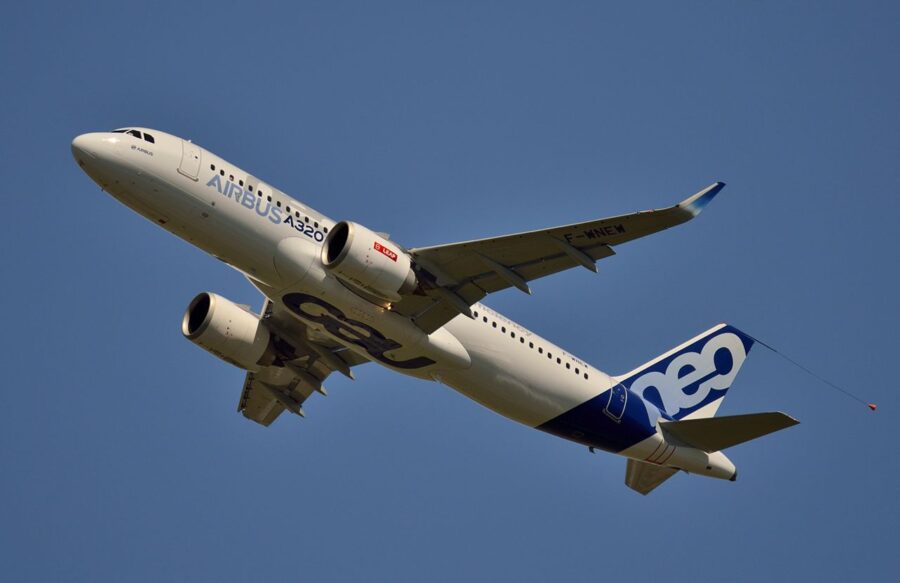Airbus A320 Surpasses Boeing 737 in Global Deliveries

Airbus has officially unseated Boeing’s 737 as the most-delivered jetliner in aviation history, marking a pivotal milestone in the decades-long rivalry between the world’s two leading aircraft manufacturers.
According to industry benchmark data from UK-based consultancy Cirium, the European planemaker reached a total of 12,260 A320-family deliveries following a recent handover to Saudi low-cost carrier Flynas. This milestone pushes Airbus past Boeing’s 737, which had held the title for decades.
Although Airbus has not yet commented on the achievement, the data—tracked by aircraft supply expert Rob Morris—confirms the shift in dominance. Combined, Airbus and Boeing have delivered over 25,000 single-aisle jets, most of them serving high-frequency, short-haul routes around the globe.
Originally designed to support flights feeding into major hubs, the A320 and 737 became staples of low-cost carriers as the aviation landscape evolved. Airbus seized its advantage in the 2000s, when Boeing cut output following a downturn in air travel demand after the 9/11 attacks. This strategic pivot allowed Airbus to court budget airlines aggressively and increase market share.
Airbus is already the largest commercial aircraft manufacturer by annual deliveries. But eclipsing the 737 in total production adds a symbolic victory in what has been a 40-year transatlantic battle for aerospace dominance, often shaped by differing strategies and political interests across Europe and the United States.
A Revolutionary Beginning
Launched in 1984, the A320 marked a turning point for Airbus. At the time, critics doubted whether the European consortium—comprising France, Germany, Spain, and the UK—could survive much longer after the costly launches of its earlier wide-body aircraft. Yet in 1987, the A320 took flight, pioneering fly-by-wire digital controls for a commercial narrow-body jet—a groundbreaking move that faced resistance from pilots, unions, and traditionalist carriers, but ultimately became an industry standard.
Boeing’s 737, first introduced in the 1960s, had long set the benchmark for narrow-body aircraft. But Airbus’s bet on innovation, passenger comfort, and expanded global manufacturing paid off. The company has since added assembly lines in Toulouse, Hamburg, Tianjin, and Mobile, Alabama, allowing it to meet soaring demand in multiple regions.
Safety, Setbacks, and a Changing Industry
The 737 faced its most serious setback following two tragic MAX crashes in 2018 and 2019, which led to a global grounding and intense scrutiny of Boeing’s safety and certification processes. Although the MAX has since returned to service under tighter oversight, Boeing’s production ramp-up has been cautious, constrained by FAA-imposed caps and supply chain challenges.
Airbus, in contrast, has continued a steady pace of deliveries, particularly of the A320neo family, which offers fuel efficiency gains and improved range. As of 2025, Airbus is increasing output to meet surging demand from airlines updating fleets and expanding capacity in a post-pandemic recovery.
Looking Ahead
Both Airbus and Boeing are expected to introduce next-generation narrow-body models sometime in the next decade, though both manufacturers said at the ISTAT Europe conference in Prague that new programs won’t launch anytime soon. They’re holding out for advancements in engine technology and sustainability performance before committing billions to new designs.
Founded in 1983, the International Society of Transport Aircraft Trading (ISTAT) is a nonprofit aviation organization offering global networking, education and industry programs.
For now, Airbus holds the crown, and the A320’s rise from a questioned experiment to the most-delivered jetliner in history underscores the impact of long-term strategy, technological innovation, and global adaptability in a fiercely competitive industry.
Related News: https://airguide.info/?s=airbus+a320, https://airguide.info/?s=boeing+737
Sources: AirGuide Business airguide.info, bing.com, reuters.com
